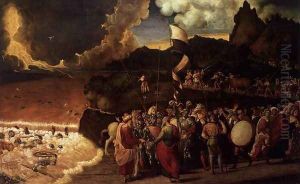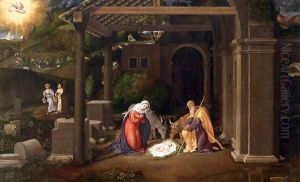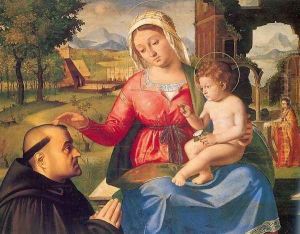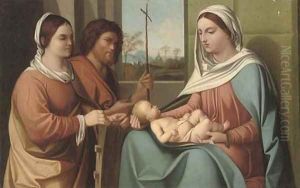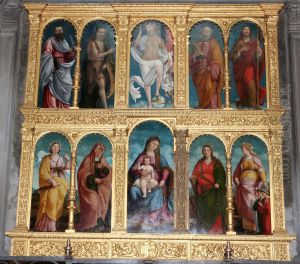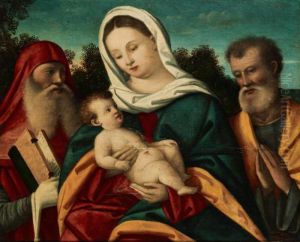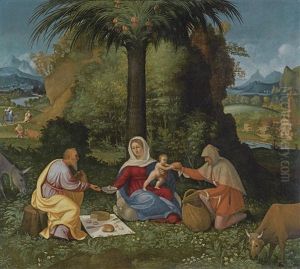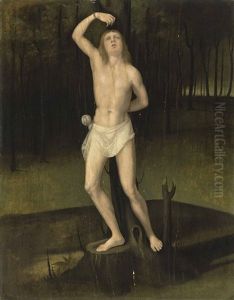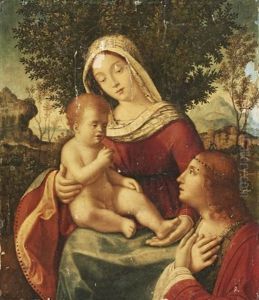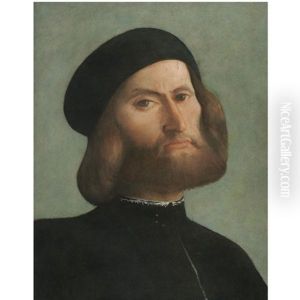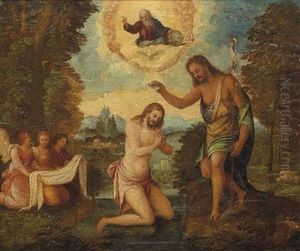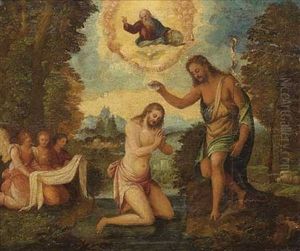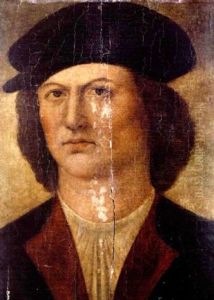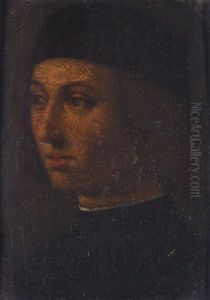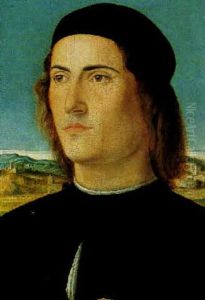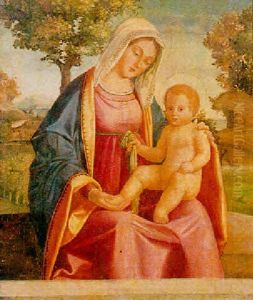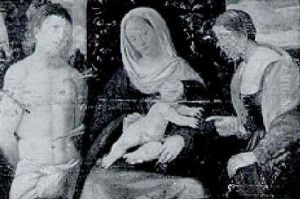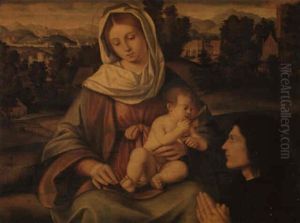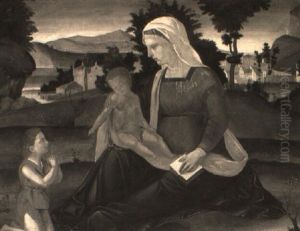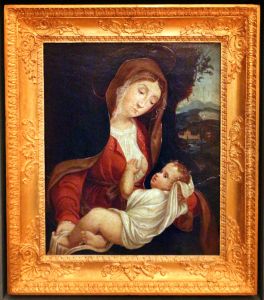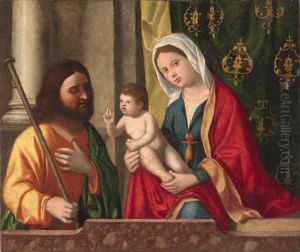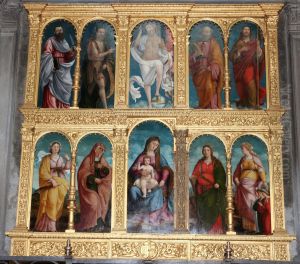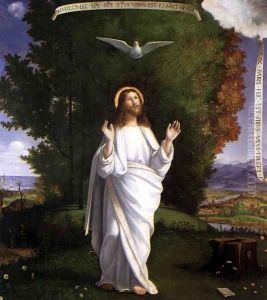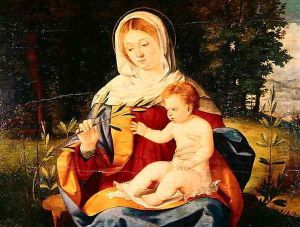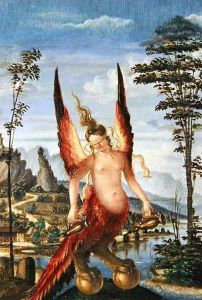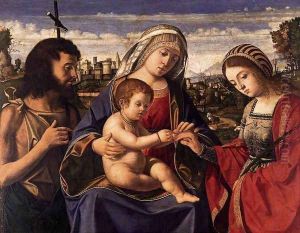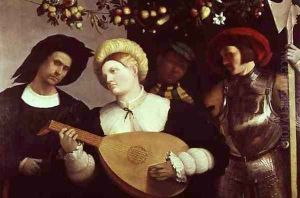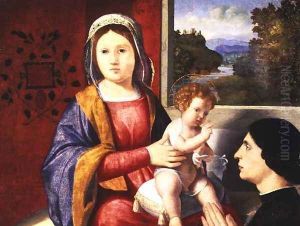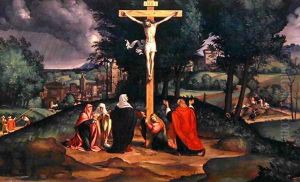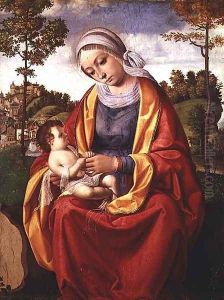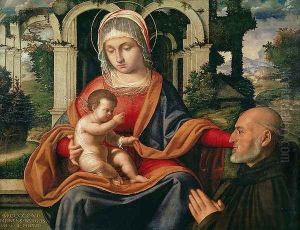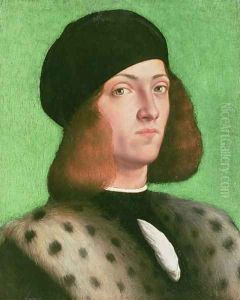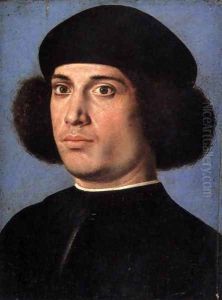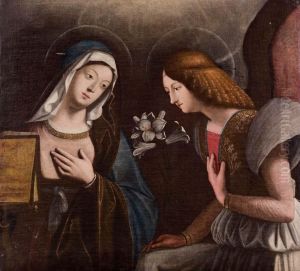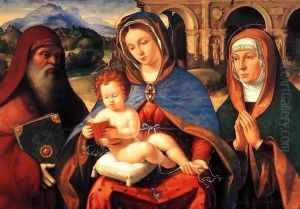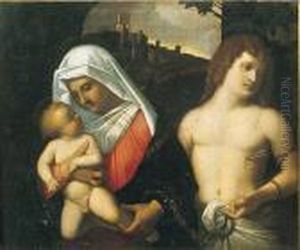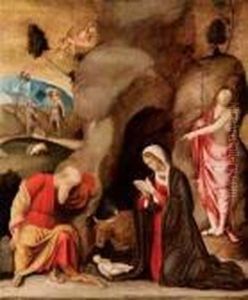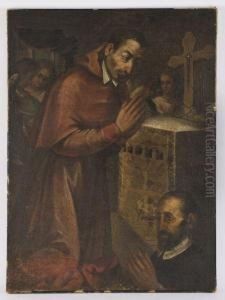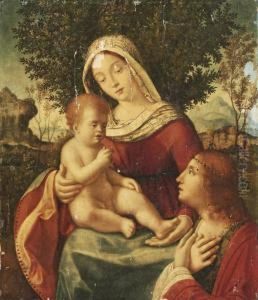Andrea Previtali Paintings
Andrea Previtali was an Italian Renaissance painter who was born around 1480 in the town of Bergamo, Lombardy, then part of the Republic of Venice. He is considered one of the followers of the Venetian painter Giovanni Bellini, and his work was significantly influenced by the Venetian school's style and color palette.
Previtali likely moved to Venice at an early age to apprentice under Bellini, who was one of the most distinguished painters of the period. During his time in Venice, Previtali would have been exposed to the rich artistic environment of the city and the works of other great masters like Giorgione and Titian, absorbing their techniques and stylistic nuances.
Previtali's early works demonstrate a close adherence to Bellini's style, characterized by gentle expressions, a soft use of color, and a serene compositional approach. He was skilled in creating religious works, often depicting Madonna and Child, as well as other religious figures with a tender and devotional atmosphere. Previtali was also known for his portraits, though fewer of these have been definitively attributed to him.
After his formative years in Venice, Previtali returned to Bergamo, where he continued to work and received numerous commissions. In Bergamo, he became an influential local painter, contributing to the spread of the Renaissance style in the region. His later works show an increased confidence in the use of color and a greater influence from other Venetian artists of the time.
Despite being less well-known than his contemporaries, Previtali's work is appreciated for its grace and for providing a link between the Venetian Renaissance and the artistic development in Lombardy. His paintings can be found in various Italian churches and in collections of major museums around the world.
Andrea Previtali's career was cut short when he died in 1528 during a plague that swept through Bergamo. His legacy lives on through his serene and harmonious compositions, which have earned him a place among the respected artists of the Italian Renaissance.

